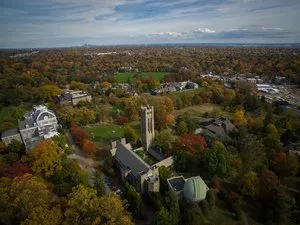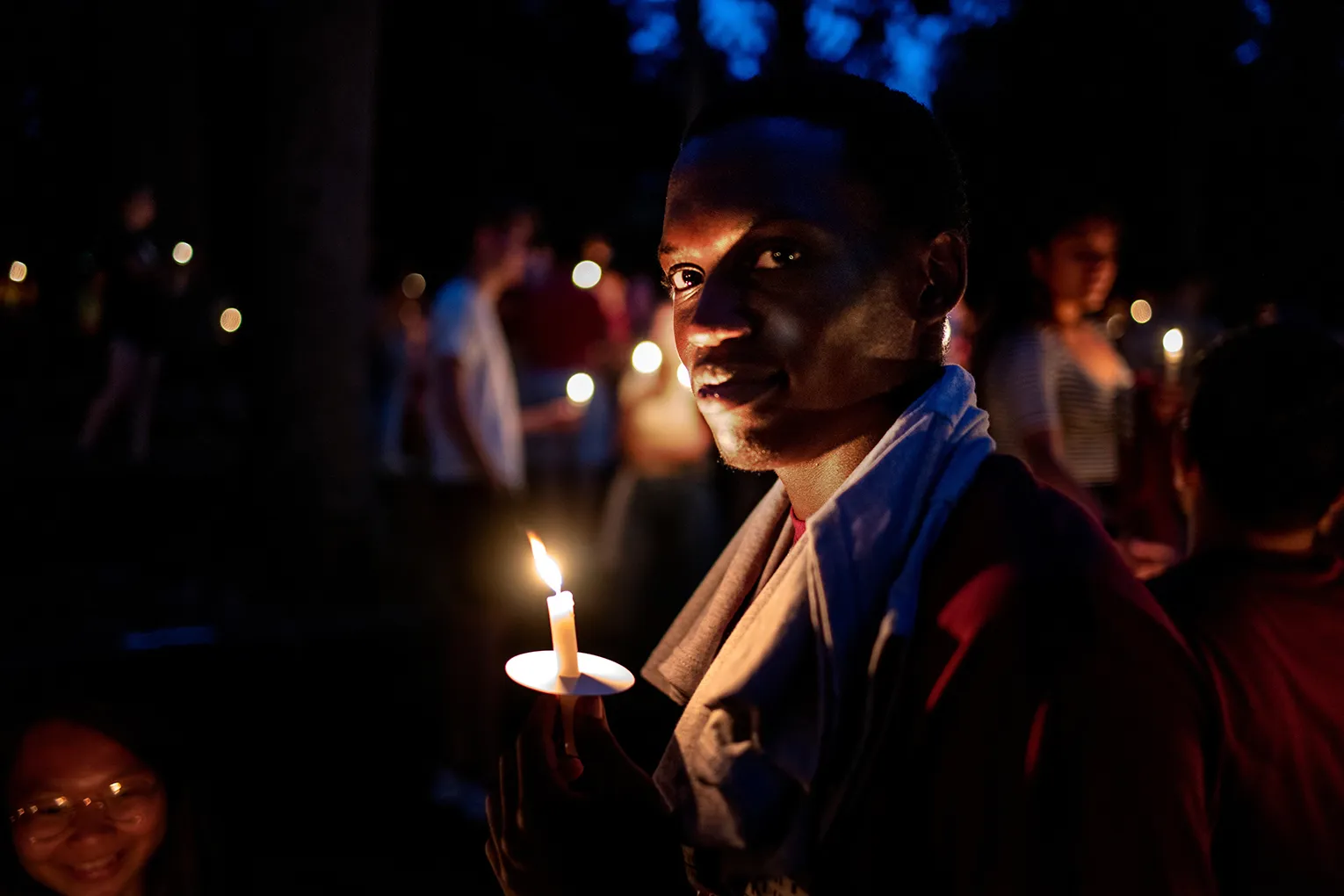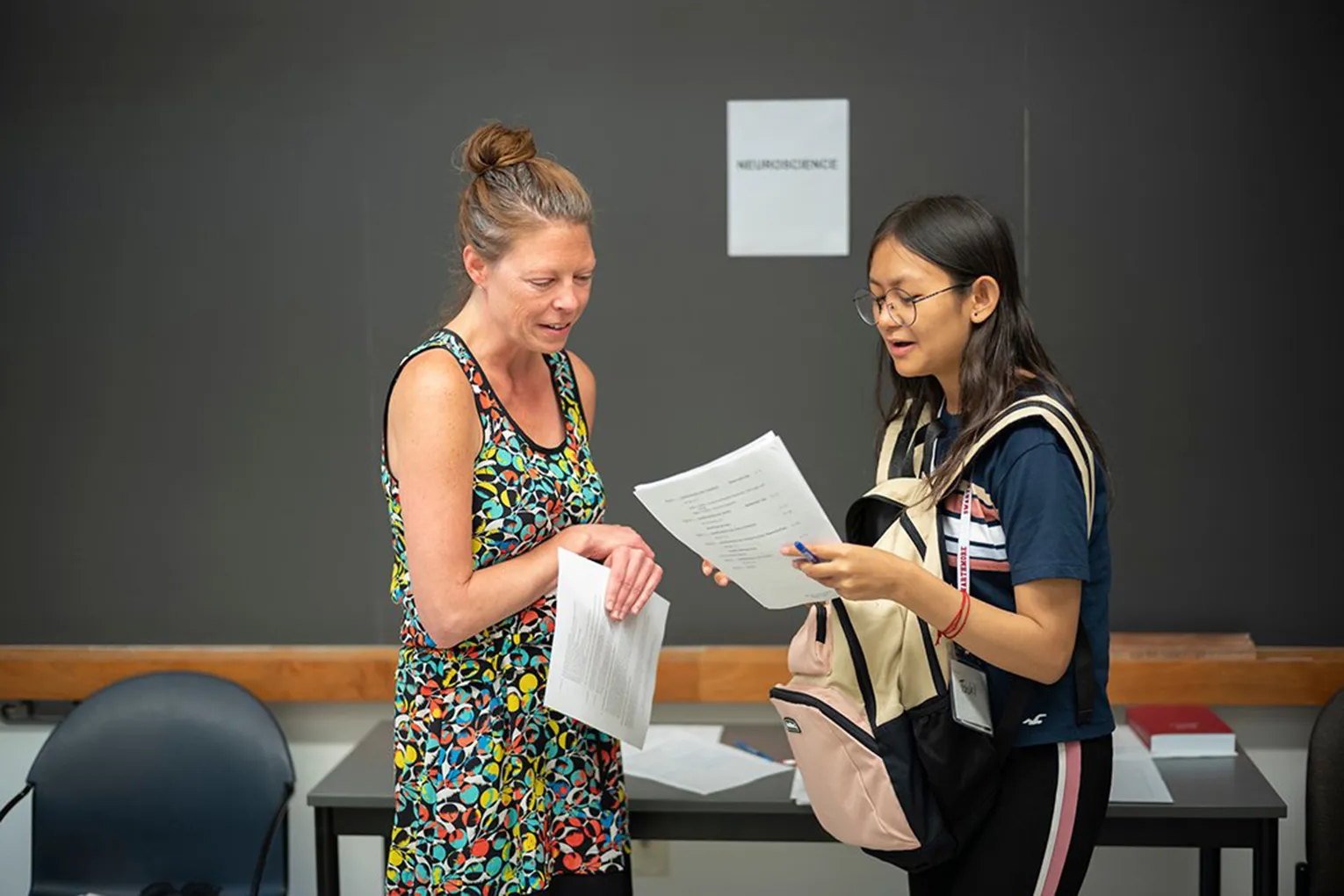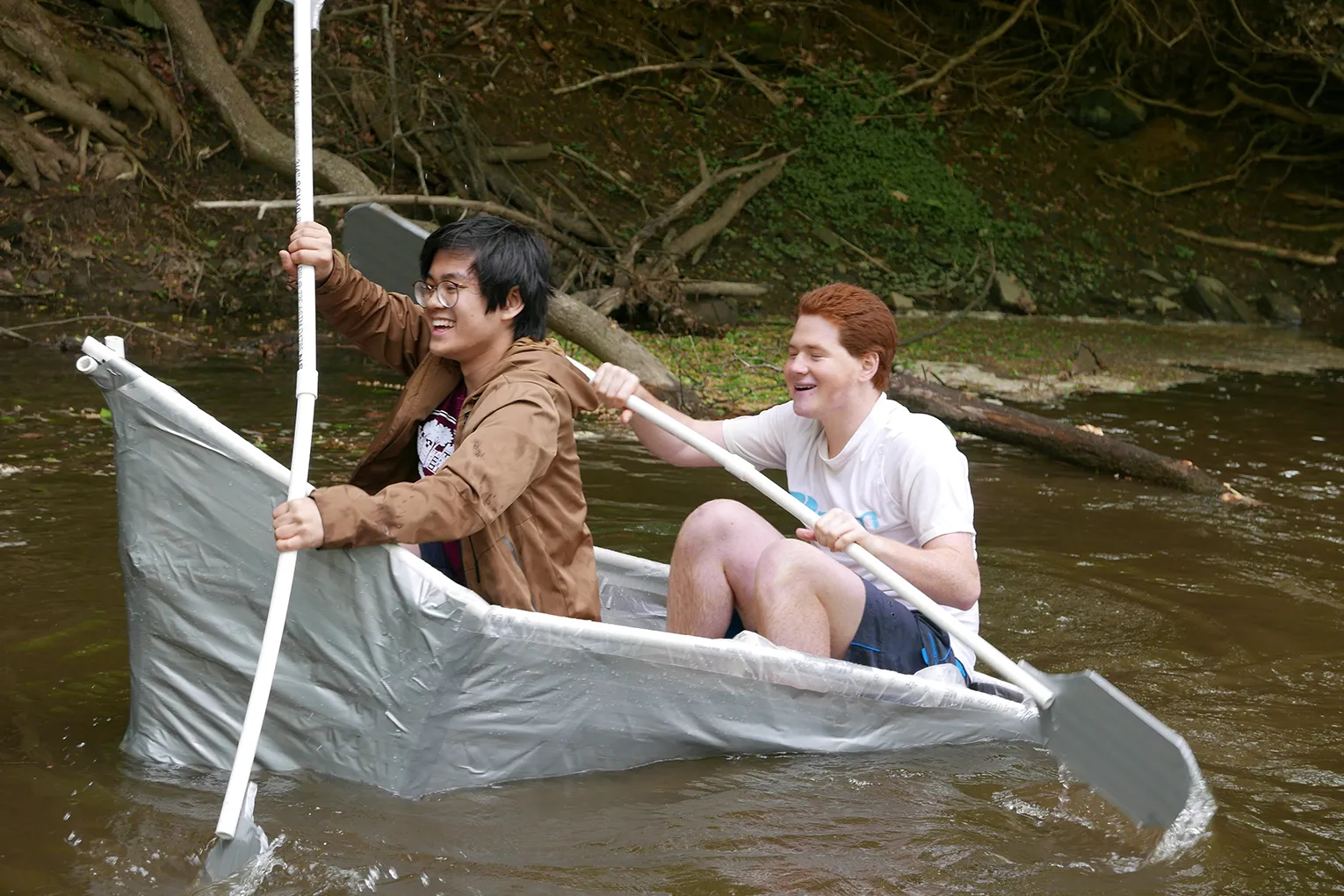Ecology of Place
Ecology of place is central to Martin Hall’s design, which intentionally integrates the building into the surrounding ecosystem, enhancing native vegetation and supporting local biodiversity. Efforts to regenerate the habitat include stormwater retention and the addition of over 60 trees to the site. The wood of several trees that were removed was salvaged and used in Martin Hall and other campus projects.
Changes to the building’s footprint further expand connections from the College’s North Quad to the Crum Woods, and provide the campus with more functional outdoor space, trees, views, and vegetation. Martin Hall used to house an animal research lab and greenhouse. In 2025, renovations gave the building more usable square footage in a smaller footprint, allowing for more of the Scott Arboretum landscape to surround the building and for better absorption of rainwater into nearby soil. When reducing the building’s footprint, solar shading diagrams were used to carefully mitigate shade impacts on neighboring buildings, particularly Cornell Library.
Martin Hall is designed so that more than 75% of its non-performance spaces have natural light and views of the outside. Smart controls shut off heat and air conditioning when operable windows are opened, and building sensors monitor room temperature, occupancy, lighting, and air quality to allow for the fine-tuning of building operations. A Dedicated Outdoor Air System (DOAS) provides fresh, filtered, ventilated air to promote indoor air quality. The DOAS uses a heat recovery system to reduce the energy impact of bringing in large quantities of ventilated air into the building, further enhancing energy efficiency. Natural linoleum flooring and non-toxic paints were used throughout construction, and building maintenance follows a healthy indoor environment plan that includes only the use of non-hazardous cleaning chemicals.
All data collected from Martin Hall’s systems operations — including room temperature, room occupancy, lighting, and air quality — is open source and available for educational use by Swarthmore students, faculty, and staff members.



